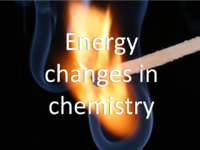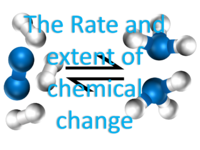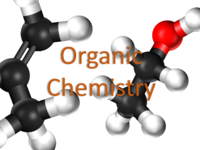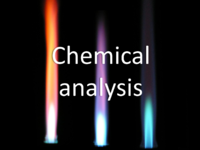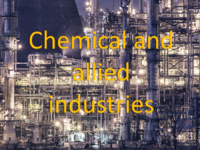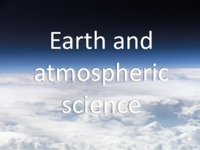Chemistry Key Stage 4
Main Page - Science Subject - Science Key Stage 4 - Chemistry Key Stage 4
| GCSE Chemistry Exam Papers | GCSE Chemistry Required Practicals |
Contents
- 1 Atomic Structure and the Periodic Table
- 2 Structure, Bonding and the Properties of Matter
- 3 Chemical Changes
- 4 Energy Changes in Chemistry
- 5 The Rate and Extent of Chemical Change
- 6 Organic Chemistry
- 7 Chemical Analysis
- 7.1 Assessing purity and separating mixtures
- 7.2 Conservation of mass and the quantitative interpretation of balanced equations
- 7.3 Higher: Use of amount of substance in relation to masses of pure substances
- 7.4 Higher: Use the mole in relation to volumes of gases
- 7.5 Principles for determining the concentrations of solutions
- 7.6 Identification of ions by chemical and spectroscopic means
- 8 Chemical and Allied Industries
- 8.1 Life cycle assessment and recycling
- 8.2 Fractional Distillation of crude oil and cracking
- 8.3 Different methods of extracting and purifying metals with reference to a reactivity series with oxygen and the position of carbon within it
- 8.4 Using materials
- 8.5 Higher: The balance between equilibrium position and rate in industrial processes
- 8.6 Agricultural productivity and the use of nitrogen, phosphorus and potassium-based fertilisers
- 8.7 The comparison of yield and atom economy of chemical reactions
- 9 Earth and Atmospheric Science
Atomic Structure and the Periodic Table
Atoms
Atomic Structure
- The Dalton Model of the Atom
- The Plum Pudding Model of the Atom
- The Nuclear Model of the Atom
- The Bohr Model of the Atom
- Nucleus
- Electrons
- Atomic Number
- Relative Atomic Mass
- Calculating the Numbers of Protons, Neutrons and Electrons
Periodic Table
The First 20 Elements
- Hydrogen
- Helium
- Lithium
- Beryllium
- Boron
- Carbon
- Nitrogen
- Oxygen
- Fluorine
- Neon
- Sodium
- Magnesium
- Aluminium
- Silicon
- Phosphorus
- Sulphur
- Chlorine
- Argon
- Potassium
- Calcium
Mendeleev's Periodic Table
Groups
Reactivity
Periods
Elements
Chemical Reactions
Properties of Transition Metals
Transition Metals
Structure, Bonding and the Properties of Matter
Properties of Matter
Particle Model
Bonds
Physical Change
Chemical Change
State of Matter
State Change
Chemical Bonds
Common Compounds
Products of Neutralisations
Metal Oxides
Common Acids
Salts
Carbon
Nanoparticles
Chemical Changes
Chemical Symbols, Formulae and Equations
Gas Tests
Chemistry of Acids
GCSE Chemistry Required Practical: Titration
Common Neutralisation Reactions of Acids
- Acid + Metal → Metal Salt + Hydrogen
- Acid + Metal Oxide → Metal Salt + Water
- Acid + Metal Hydroxide → Metal Salt + Water
- Acid + Metal Carbonate → Metal Salt + Carbon Dioxide + Water
Reactivity Series
Reactivity
Electrolysis
Electrolysis of Molten Ionic Compounds
Electrolysis of Aqueous Ionic Compounds
GCSE Chemistry Required Practical: Electrolysis of a Solution
Redox Reactions
Energy Changes in Chemistry
Exothermic and Endothermic Reactions
GCSE Chemistry Required Practical: Investigating Temperature Changes
Carbon Compounds as Fuels and Feedstock
Chemical Cells and Fuel Cells
The Rate and Extent of Chemical Change
Factors that influence the rate of reaction, including catalysts
GCSE Chemistry Required Practical: Concentration and Rate of Reaction
Reversible reactions and dynamic Equilibrium
Organic Chemistry
Homologous series, including alkanes, alkenes, alcohols, and carboxylic acids
Organic Compounds
Homologous Series
Representing Organic Compounds
Simple Reactions of alkanes, alkenes, and alcohols
Synthetic and naturally occurring polymers including DNA
Chemical Analysis
Assessing purity and separating mixtures
Separating Mixtures
GCSE Chemistry Required Practical: Making Salt
GCSE Chemistry Required Practical: Calculating Retention Factors
Conservation of mass and the quantitative interpretation of balanced equations
Higher: Use of amount of substance in relation to masses of pure substances
Higher: Use the mole in relation to volumes of gases
Principles for determining the concentrations of solutions
Identification of ions by chemical and spectroscopic means
GCSE Chemistry Required Practical: Identifying Unknown Compounds



